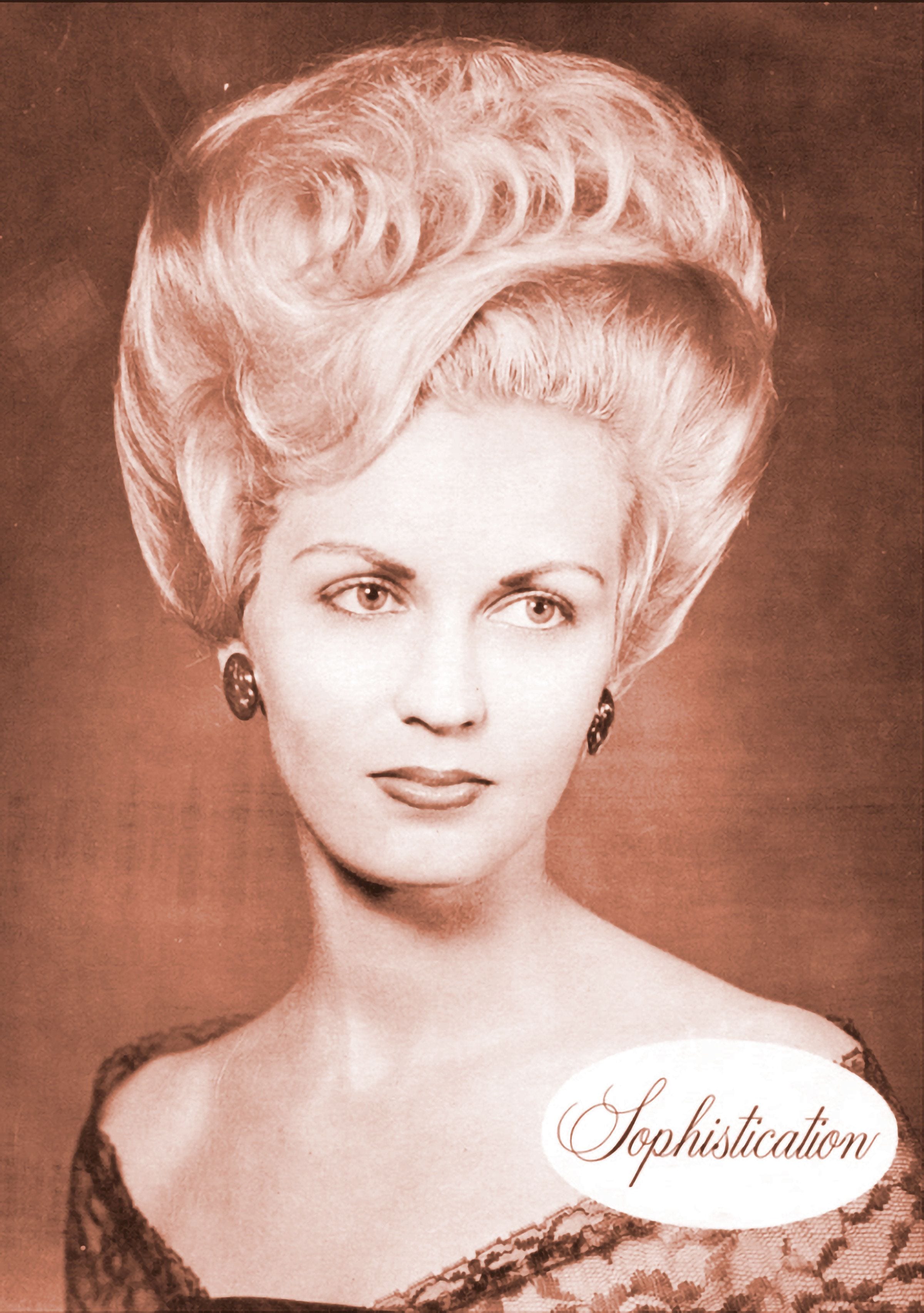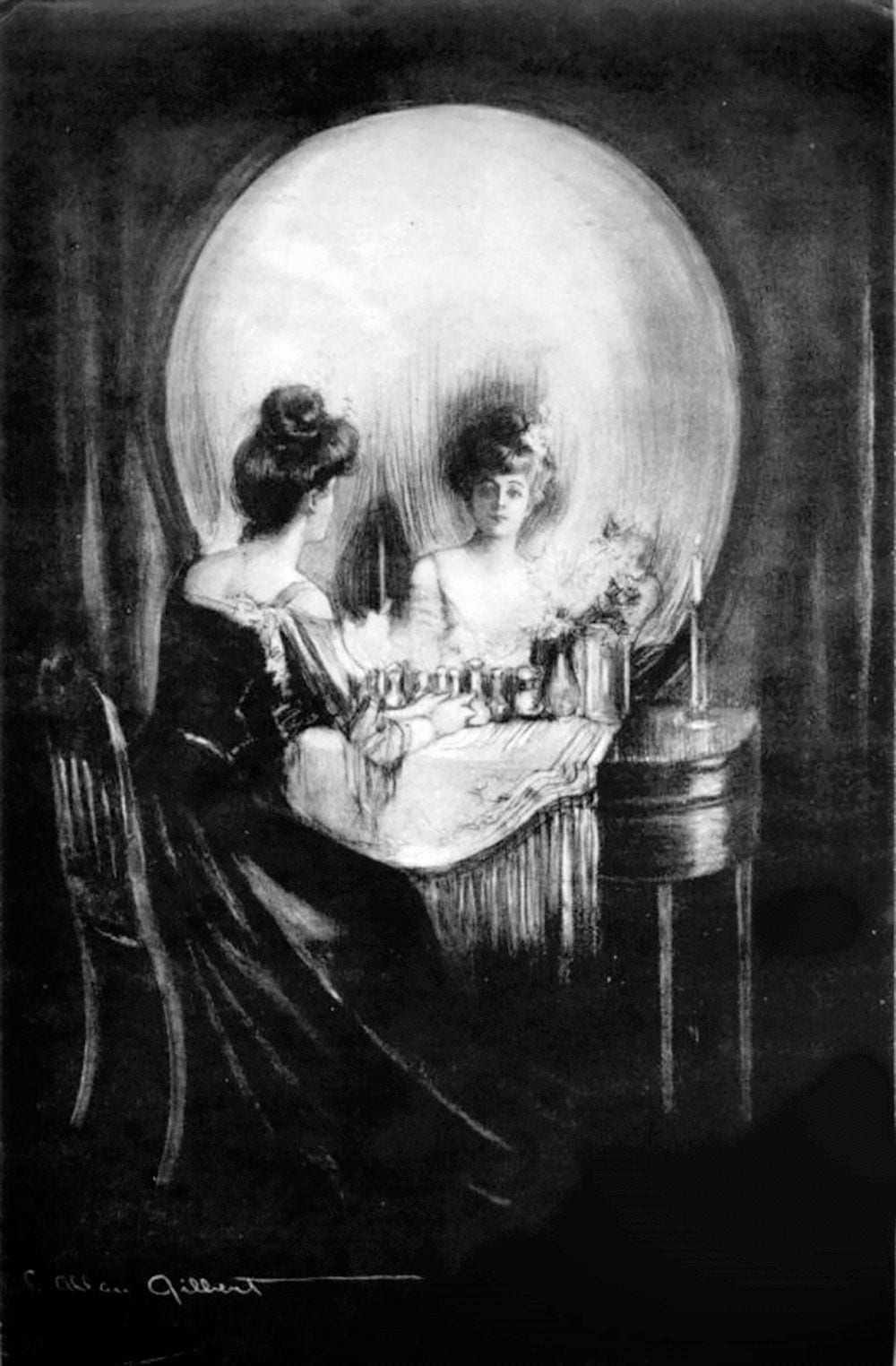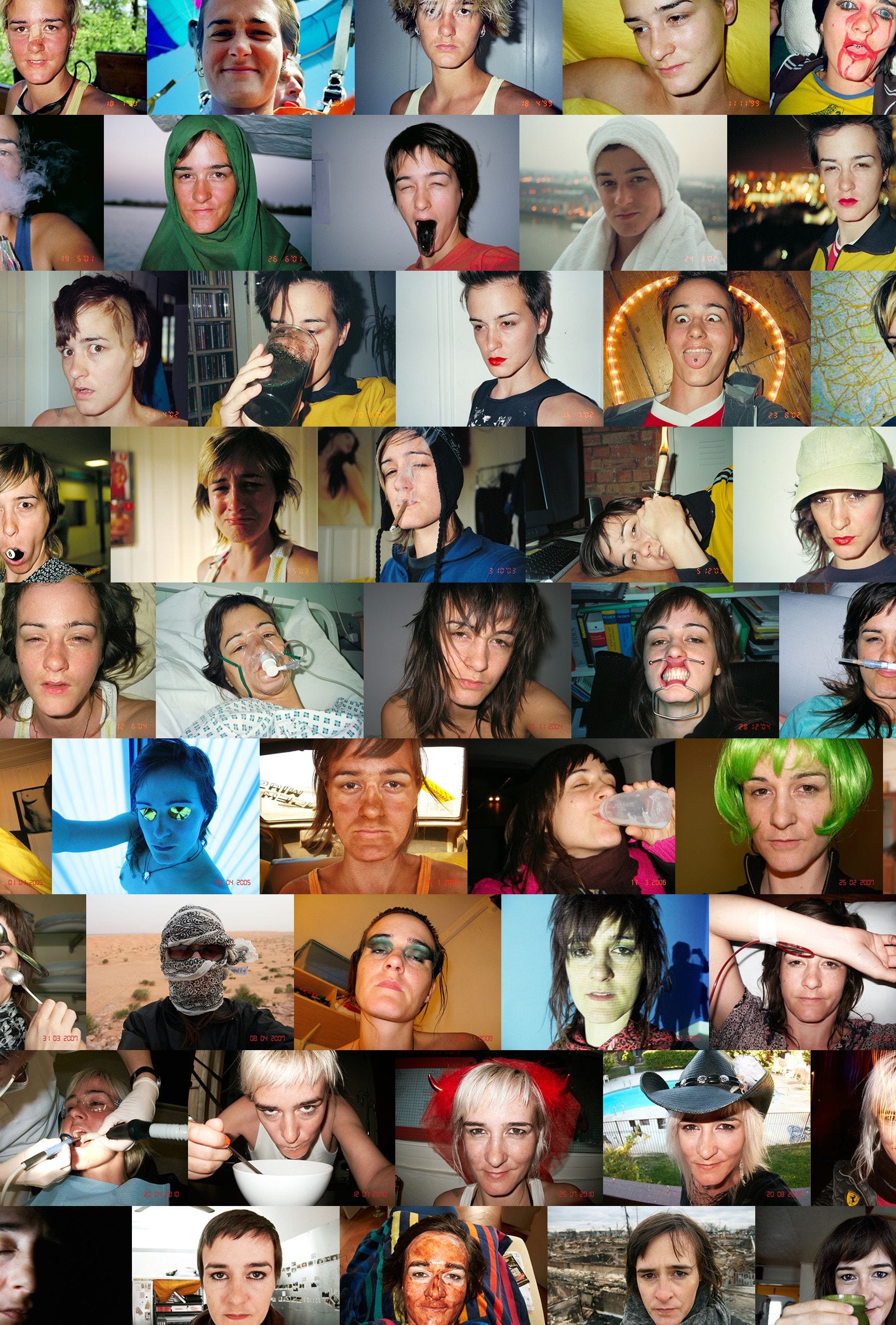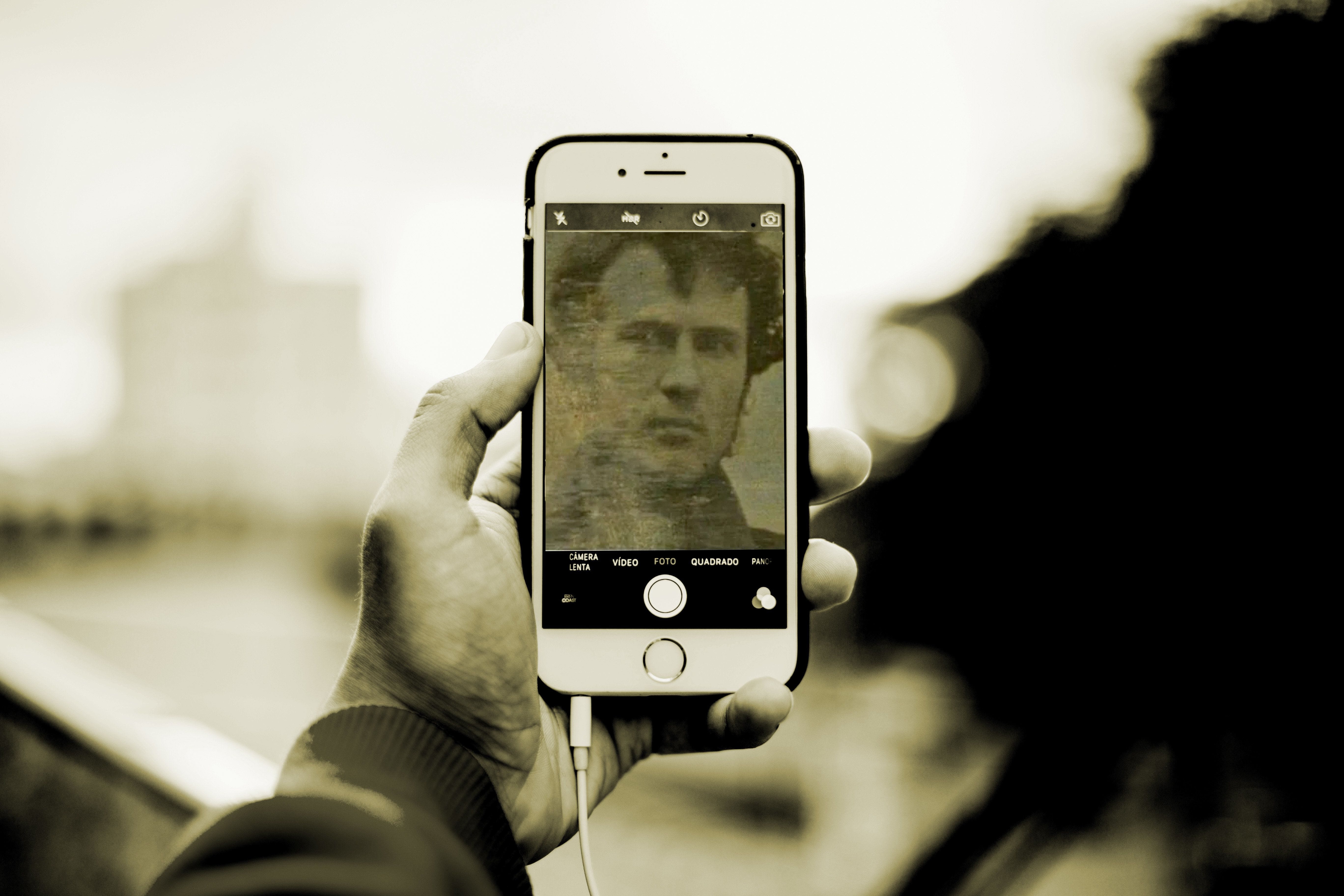
V | Vanity
A fashionable woman sits in a New York City hair salon, facing her reflection in a mirror. Her stylist faces the mirror, too. Their conversation, if it can be called that, happens sporadically: there is some pointing and posing, the essential directions duly transmitted and received, but any relative reciprocity here is minimal. Their eye contact is triangulated, impersonal, and oblique.
Sitting woman is speaking into some kind of Bluetooth-enabled mouthpiece, watching her own reflection and examining her every movement as she does so. She studies, with considerable attention, how her face changes dimension as she talks. She explains, in considerable detail, how a bidding war has begun on her house. And she narrates, at considerable volume, the multiple six-figure sums on offer. It’s an odd dynamic—watching someone addressing an invisible person, talking on an invisible phone, completely ignoring her very present, yet seemingly invisible, stylist—and the resulting scene is nothing less than a travesty of tone-deaf privilege. Vanity, in the absolute, takes no prisoners: it just makes the rest of the world vanish.
The word itself has a rich literary and liturgical history, and to chart its essential trajectory—from bible to allegory, satire to consumerism— is to witness a boldly shifting target, veering from the desire for self-awareness (a moral conceit) to the display of self-idolatry (a physical one). In Christianity, vanity presents as one of the Seven Deadly Sins, lyricized in the book of Ecclesiastes (“Vanity of vanities / saith the Preacher / vanity of vanities / all is vanity”) and allegorized in John Bunyan’s seventeenth-century novel, Pilgrim’s Progress, where stories of Christian principle play out against the vicissitudes of social martyrdom. The action here takes place in the city of Vanity Fair, defined by Bunyan as a “place or scene of ostentation or empty, idle amusement and frivolity” and thus aptly named. (His characters are equally metonymic, including, among others, Ignorance, the Flatterer, and Mrs. Know-Nothing.) A century later, William Thackeray would write a satirical novel by this title, and by 1913, it would spawn a successful monthly publication that endures today as a media staple for the glitterati. If consumer magazines are to modern-day vanity what mirrored palaces once were to the aristocracy, glossy pages might just provide the perfect visual metaphor for the vain. Shiny objects have always favored social nearsightedness.

Phyllida’s hair was where her power resided. It was expensively set in a smooth dome, like a band shell for the presentation of that long-running act, her face. – Jeffrey Eugenides (Courtesy of MIT Press)

Jan Miense Molenaer. Allegory of Vanity. 1633. Toledo Museum of Art. (Courtesy of MIT Press)

Charles Allen Gilbert. All Is Vanity (detail). 1892. (Courtesy of MIT Press)
Vanity—once known as “vainglory” and sometimes used interchangeably with pride—is also code for valuelessness. (The Latin vanitas actually means worthless.) Vanities are also synonyms for trifles, and up until the fourteenth century, the word itself was a euphemism for futility, a reminder that life itself was transient. Medieval works of art favoring still-life displays came to be known as “vanitas” paintings and were meant to represent the futility of life: by conjecture, they served equally as keen graphic admonitions for the certainty of death. These images often included symbolic elements— a fragile butterfly, a rotting apple, a waning candle—and skulls, sometimes featured prominently and other times, placed as hidden, almost trompe l’oeil elements within a frame. The American illustrator Charles Allan Gilbert’s classic 1892 drawing All Is Vanity shows a woman seated at her dressing table (her “vanity”) in such a way that the resulting image forms a skull. Both the Spanish baroque painter Antonio de Pereda and the Dutch golden age painter Jan Miense Molenaer’s produced paintings entitled Allegory of Vanity that feature listless women, disengaged from their surroundings, posed like inert statues alongside globes, jewelry, and skulls. In Molenaer’s painting from 1633, a woman sits with a mirror on her lap, ignoring everything around her, including (and especially) her child. It’s a stunningly modern composition: she could be sitting today in a hair salon. (That mirror could be an iPad.) Mrs. Know Nothings aren’t just fictional characters: they’re social archetypes, and we all know them.
If vanities were once believed to be expressions of personal sin, it was because they were seen as indulgent and boastful: one should not be prideful, but penitent, sooner virtuous than vain. Long before it was a novel by Tom Wolfe or an action role-playing video called Assassin’s Creed, the original “bonfire of the vanities” was a fifteenth-century event in Florence in which objects believed to promote indulgent activities were publicly burned. These included books, art, clothing, and jewelry, but also targeted cosmetics and mirrors—trifles of self-love, perhaps, but also precursors of portability. Today, of course, vanity has never been more mobile. Wearable devices track our physical output. Digital platforms extend our social reach. Smartphones function as robotic concierges but serve equally as court jesters, at once armed with services and primed for 24/7 entertainment. Emojis—the iconic deputies of the lazy correspondent—may not reflect vanity so much as laziness, but our ability to fine-tune their skin tone suggests that we want them to look as much like us as possible: is that not an expression of vanity, too, to map everything in your own likeness, even dingbats intended to simulate your feelings?
The smartphone’s most seductive feature is undoubtedly its embedded camera, on high-alert at all times, lest we miss something that demands to be recorded. To take a selfie is to participate in precisely this dance: private moment to public display, you as the star of your own imagined show, capturing the instant, carpe-ing the diem, routinely reinforcing your own arguably infinitesimal presence in the world. Holding that camera in your hand, pointing it back at yourself, tilting your chin up, capturing the best light, favoring your good side—all to take a picture of yourself, and another, and another, and why not take a few hundred more, because what does it matter in a world where the display space before you is boundless? With the advent of virtual reality, what we even consider to be boundless is boundless. Doesn’t that much opportunity breed its own kind of vanity?

Wax Vanitas. Eighteenth-nineteenth century. Welcome Collection. (Courtesy of MIT Press)

Diana Scheunemann. Behind My Face 1999–present. The Swiss/German photographer Diana Scheunemann has been taking a self-portrait every day since 1999. As an editorial and advertising photographer, Scheunemann has undertaken a vanity project that is anything but vain: rather than primp for her camera, she captures herself as a documentarian might do. The resulting visual diary is as much a portrait of time’s passage as it is a portrait of the artist herself. (Courtesy of MIT Press)

Diana Scheunemann. (Courtesy of MIT Press)

Robert Cornelius. Daguerreotype 1839. Robert Cornelius, one of the earliest American studio phorographers, is widely believed to have taken the first photographic self-portrait, which he did by removing the lens cap and then running into the frame, sitting still for several minutes, and then rushing back to cover the lens once again. This was made possible by the long exposure times required by early photographic chemicals. (Courtesy of MIT Press)
Currently, our physical engagement with virtual space is a clunky affair, requiring a giant step into hardware—which is to say headgear—which means that our faces are proffered as willing components in a strange new kind of social choreography. Virtual reality is time travel, but it’s also space travel, not so much on a planetary level as a perceptual one. It’s a new kind of manifest destiny, relatively undeveloped and uncharted and raw (for now), with novel opportunities for invention, creation, and the acquisition of all kinds of knowledge. But just as virtual reality introduces new models for visual exploration, it obliges us to consider radical, even revolutionary new ways to embed ourselves in alternative kinds of engagement. It’s all about seeing, even if, paradoxically, this essential transaction currently obliges you to conceal your eyes. Where augmented reality is concerned, eye contact is with the virtual, not the actual (reciprocity is between the person and the device) and while it is easy to imagine that the physical apparatus itself will shrink, perhaps even one day becoming invisible, the VR process itself is, at present, rather socially isolating—and perhaps intentionally so.
Arguably, if we define vanity by our worship of earthly possessions and pursuits, we are no less vain for shifting the coordinates to these kinds of alternative landscapes. The things we want may no longer qualify as “earthly” but are no less desirable. (They might even be more desirable.) As long as our participation in these maneuvers requires headgear to ensure complete psychic immersion—our eyes behind goggles, our attention diverted from our fellow human beings—social dislocation migrates to an entirely new level. Consider the brave new world of teledildonics, where sex is more a function of playing pilot than embracing intimacy. (Or, if you are craving intimacy, it’s an environment where sex is as easily found with a cartoon character as with a physical companion.) What do we (or don’t we) see in each other’s faces and what are we giving up by reaching out in this way, the mirror skewed to participate in some elliptical relationship with a virtual plaything? Teledildonics may seem less an evocation of vanity than an expression of voyeurism, but the root cause remains largely the same: you see what you want to see, on you timetable, at your command. “There comes a time when you look into the mirror and you realize that what you see is all that you will ever be. And then you accept it. Or you kill yourself,” wrote Tennessee Williams. “Or you stop looking in mirrors.”
Jessica Helfand is a designer, artist, and writer. Educated at Yale University, where she has taught for more than twenty years, she is a cofounder of Design Observer and the author of numerous books on visual and cultural criticism. The first Henry Wolf Resident at the American Academy in Rome, Helfand has been a Director’s Guest at the Civitella Foundation and a fellow at the Bogliasco Foundation. She will be the artist in residence at the California Institute of Technology in the winter of 2020.
Excerpted from Face: A Visual Odyssey, by Jessica Helfand. (Footnotes omitted). Copyright © 2019 The MIT Press. Excerpted by permission of MIT Press. All rights reserved. No part of this excerpt may be reproduced or reprinted without permission in writing from the publisher. Editor’s note: The layout is adapted for this online format and does not match this beautiful book’s layout.
- Jessica Helfand | The MIT Press
- Face | The MIT Press
- Jessica Helfand: Books - Amazon.co.uk
- Jessica Helfand on Twitter: "My new book—Face: A Visual Odyssey ...
- Face: A Visual Odyssey (The MIT Press): Jessica Helfand ...
- Jessica Helfand - Yale School of Art
- Visual Thinking: Jessica Helfand on Invention, the Studio as ...
- Jessica Helfand - Wikipedia

